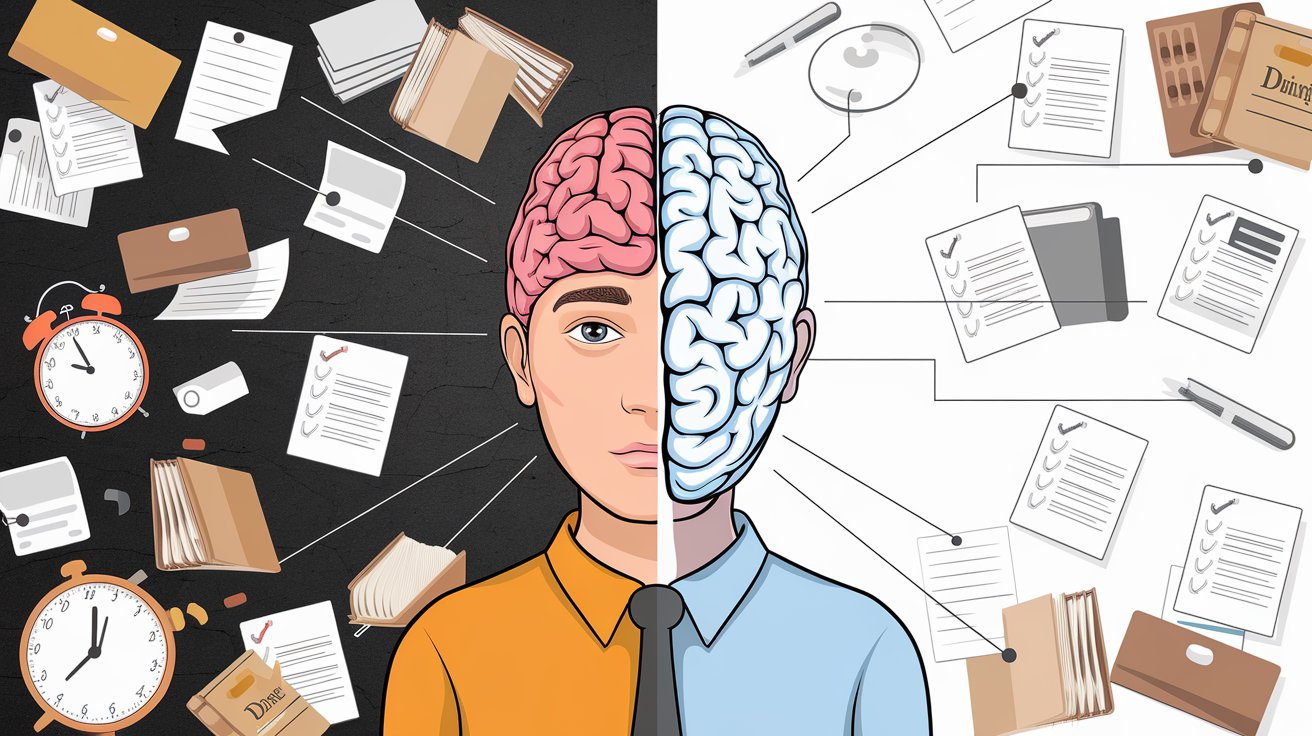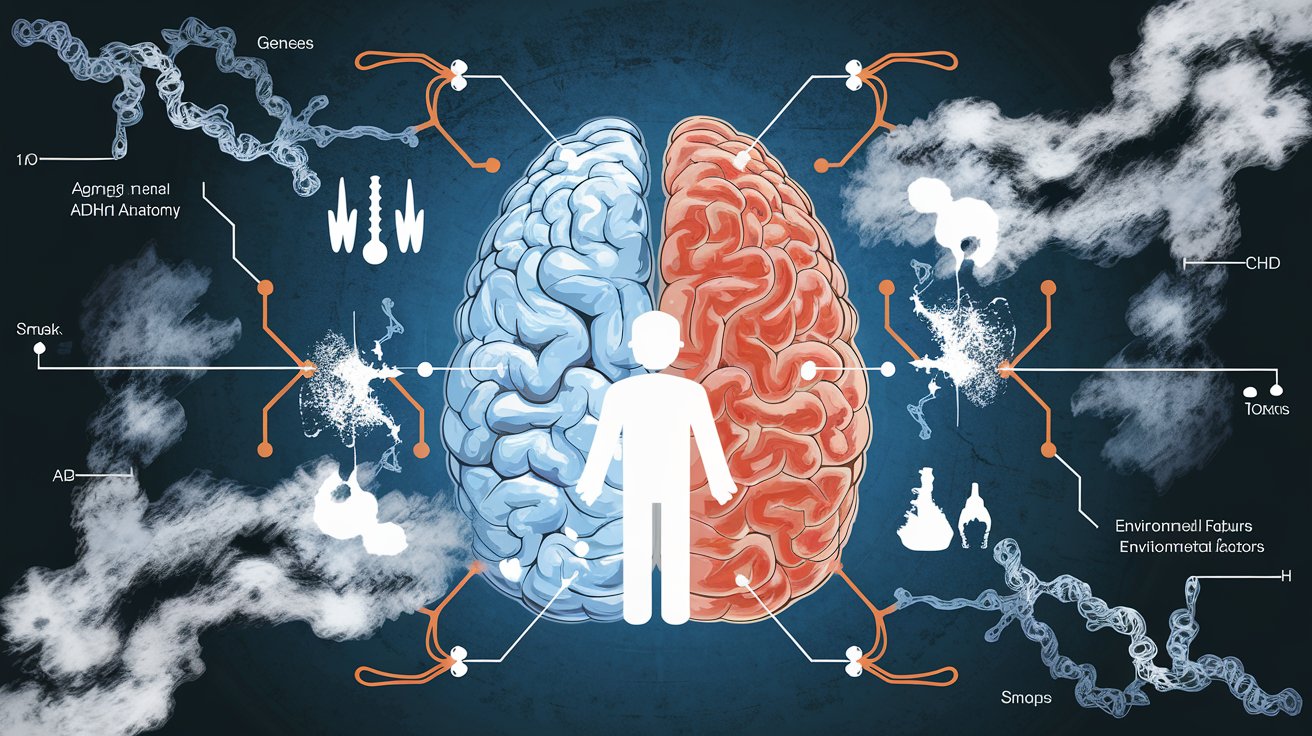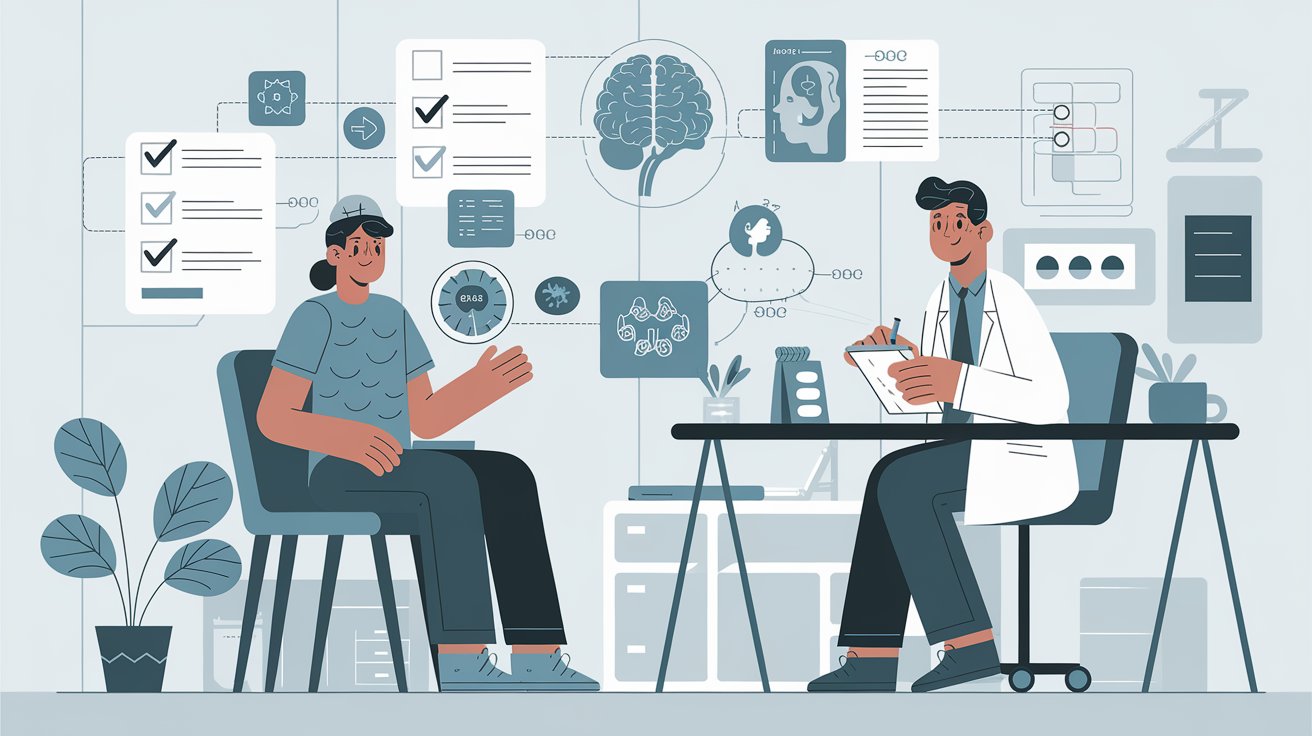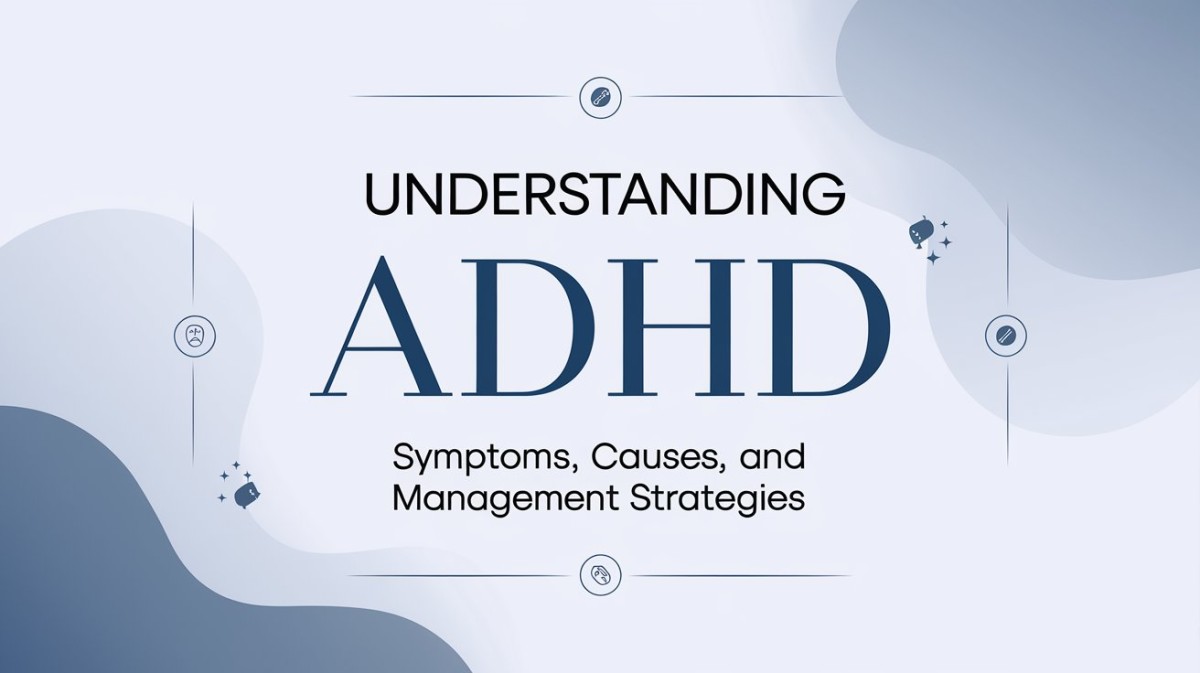Do you ever listen to someone but your mind goes blank or do you have the feeling that your mind is always jumping from one topic to another? Imagine living in a world where this lack of focus isn't just a fleeting experience but a constant state of mind. This is the position that many millions of the population, who are suffering from ADHD (Attention Deficit Hyperactivity Disorder), know well. But what exactly is ADHD? In what way does it impact it accounting for daily life and what measures can be taken to contain it? We will also discuss about the common signs and symptoms associated with ADHD, the causes behind ADHD and how one can actually mange it successfully in this blog .
What is ADHD?

ADHD is called Attention Deficit Hyperactivity Disorder, which is a neurological disorder that is diagnosed in children but that may remain present in teenagers and adults as well. It is caused in inattention, impulsivity, and hyperactivity and therefore will limit one from performing optimally at school, college, work or other places.
While many out there picture ADHD as the kid who cannot sit still during the class, it is a complex disorder and comes with a variety of symptoms. There may be children who mostly exhibit inattention, and there are those who easily display hyperactivity and impulsivity. In fact, there are three main types of ADHD:
1. Predominantly Inattentive Presentation: People mainly complain of concentration problems, problems with attentiveness and problems with planning or executing tasks.
2. Predominantly Hyperactive-Impulsive Presentation: The main symptoms concern hyperactivity and impulse control, for example, the child cannot sit quietly, keeps on talking.
3. Combined Presentation: This is the most popular one, where people experience both inattentive and hyperactive-impulsive symptoms.
Symptoms of ADHD

The symptoms of ADHD differ depending on the subtype, but they generally fall under two categories: ignorance and hyperactivity impulse disorder.
Inattentive Symptoms:
❖ Frequent lack of concentration on work or chore(s)
❖ Starting lots of conversations and not having proper endings, interrupting others.
❖ Difficulties in planning and, therefore, in time keeping
❖ Attention-deficit hyperactivity
❖ Daily tasks and objects (for example, often losing things).
❖ Complaining about making careless mistakes in school work or tasks
Hyperactive-Impulsive Symptoms:
❖ Sitting restlessly or rocking back on forth on the chairs
❖ Inability to sit, either in a chair or on the floor, without shifting around or fidgeting
❖ Speaking a lot of the time without proper thought
❖ Interrupting others, and othering as well as answering other people without waiting to be asked.
❖ Situations that make one feel rather have-wired-more energy than what is required
❖ Self-assertion and poor ability to wait for a turn
These symptoms should be present for at least six months, and they should hamper one’s life for the diagnosis of this condition to be made
Causes and Risk Factors

The exact cause of ADHD is not fully understood, but research points to several factors that may contribute to its development:
1. Genetics: Silent features of ADHD include the fact that it tends to be hereditary. This time it has emerged that in the event that a family member is diagnosed with this disorder, this is a good indication that other members of the similarly family also suffer from the same illness.
2. Brain Structure and Function: Brain scans of individuals with ADHD have shown differences in regions associated with attention, impulse control, and activity regulation. Such differences could be attributing to some of those behaviors seen in ADHD individuals.
3. Environmental Factors: It is still significant whether the mother exposed herself to toxins like alcohol, tobacco, or lead, during pregnancy to develop ADHD. It has also been ascertained that complicated pregnancy such as premature birth and low birth weight increase the risk of the disorder.
4. Diet and Nutrition: ADHD is not triggered by diet however some research shows that sugar, food additives and preservative might worsen the condition in some child.
5. Other Factors: Other causes include head injury to the brain and high stress levels that may be experienced at the early ages as having an influence in causing ADHD.
ADHD in Adults

Even though this disorder is diagnosed in childhood, it ceases not to accompany an individual into adulthood. While ADHD symptoms may be similar to those in children, the ADHD symptoms that present themselves in adults are distinct because the responsibilities and demands on an adult are different from those of a child. For instance, while pre-adolescent children with hyperactivity are easy to diagnose in a classroom, adults may have internal restlessness hence, are unable to handle tasks in the workplace or sustain interpersonal relationships.
In adults, there can be constant mess for weeks, months, or years; inability to plan and organize time effectively; poor working memory; and anxiety, irritability in performing daily tasks. They can interfere with productivity, interactions with others, and general well-being if not addressed appropriately.
Diagnosing ADHD

Diagnostic assessment of ADHD does not entail a single test. However, what is used in healthcare profession is a number of approaches such as behavioral assessment, family history and self report measures. To make the diagnosis the child must be first screened to ensure that they have other conditions that might be the cause of symptoms similar to ADHD such as anxiety or learning disabilities.
ADHD should be diagnosed by an experienced health care provider for example, psychologists, psychiatrists or neurologists, who will get a full picture of the client’s behavior and difficulties.
Treatment and Management

People with ADHD suffer from this disorder throughout their lives, but, receiving proper treatment they can have productive healthful lives. Conventional approaches to the treatment of ADHD include the use of drugs, behavior therapy and changes in one’s lifestyle.
1. Medications:
There are drugs used in the management of ADHD, including stimulants like Adderall or Ritalin which seem to have positive effects for attention and impulsivity. Other drugs such as atomoxetine may however be administered in specific contexts.
2. Behavioral Therapy:
Finally, therapy can be useful to the extent of providing methods for handling with the symptoms of ADHD. CBT is very helpful not only in learning skills for organization, effective time management, and impulse control.
3. Lifestyle Adjustments:
❖ Structured routines: This wonderful picture illustrates the significance of such things as creating the daily schedule and using the planners/repeat reminders.
❖ Physical activity: Physical activity appears to enhance the function of neurotransmitters as dopamine and norepinephrine associated with attention and impulse control.
❖ Healthy diet: Some people may need to follow some form of nutrient dense diet such as omega-3 fatty acids that are known to enhance brain activity.
❖ Sleep: Adequate sleep is very important with adhd because lack of sleep makes the condition worse especially where the main symptoms affecting the patients are attention and impulsivity.
Conclusion
ADHD is a condition that can create much hardship, although it is should not be thought of as something that can characterize a person. ,ADHD may cause problems in school work, at work and in personal life but with appropriate management measures put in place people with this condition can lead normal lives. Gaining knowledge on the signs, sources, and treatments of ADHD will help design an atmosphere to support success.
People experiencing ADHD symptoms and their caregivers should consult a healthcare provider to determine what ways to alleviate the condition’s impact may exist.

